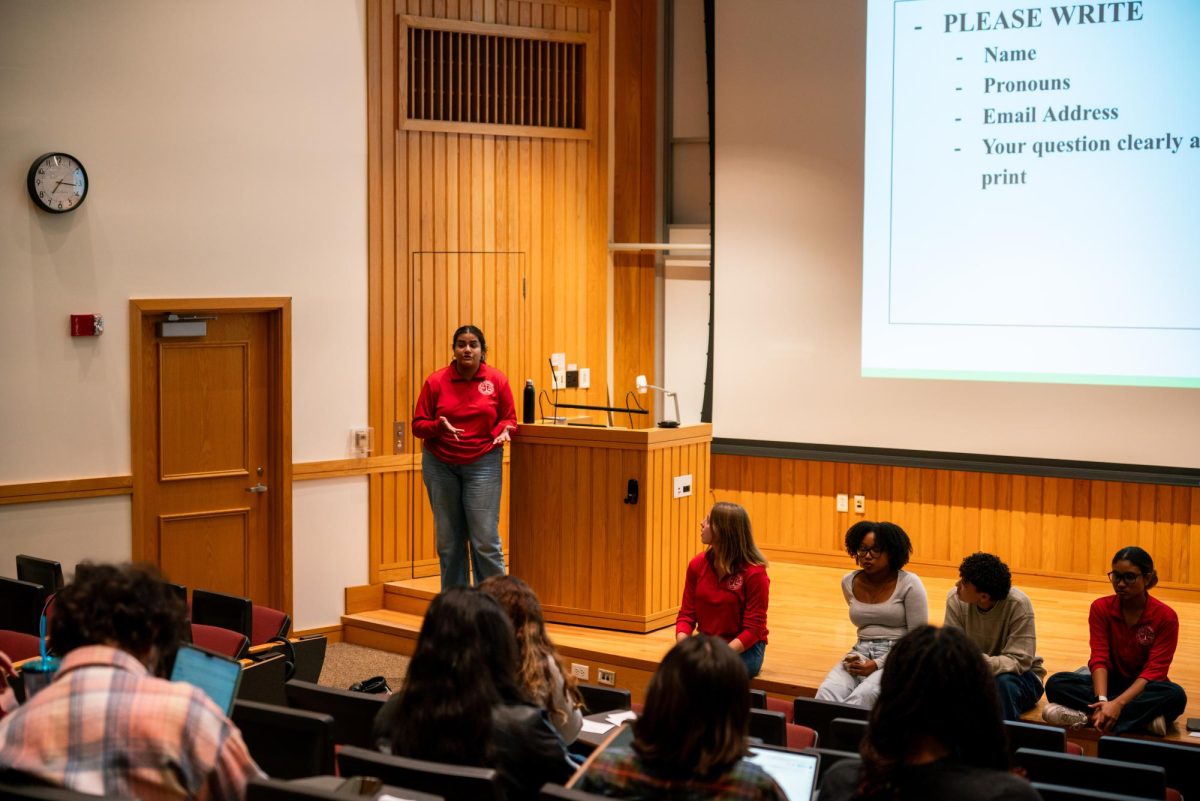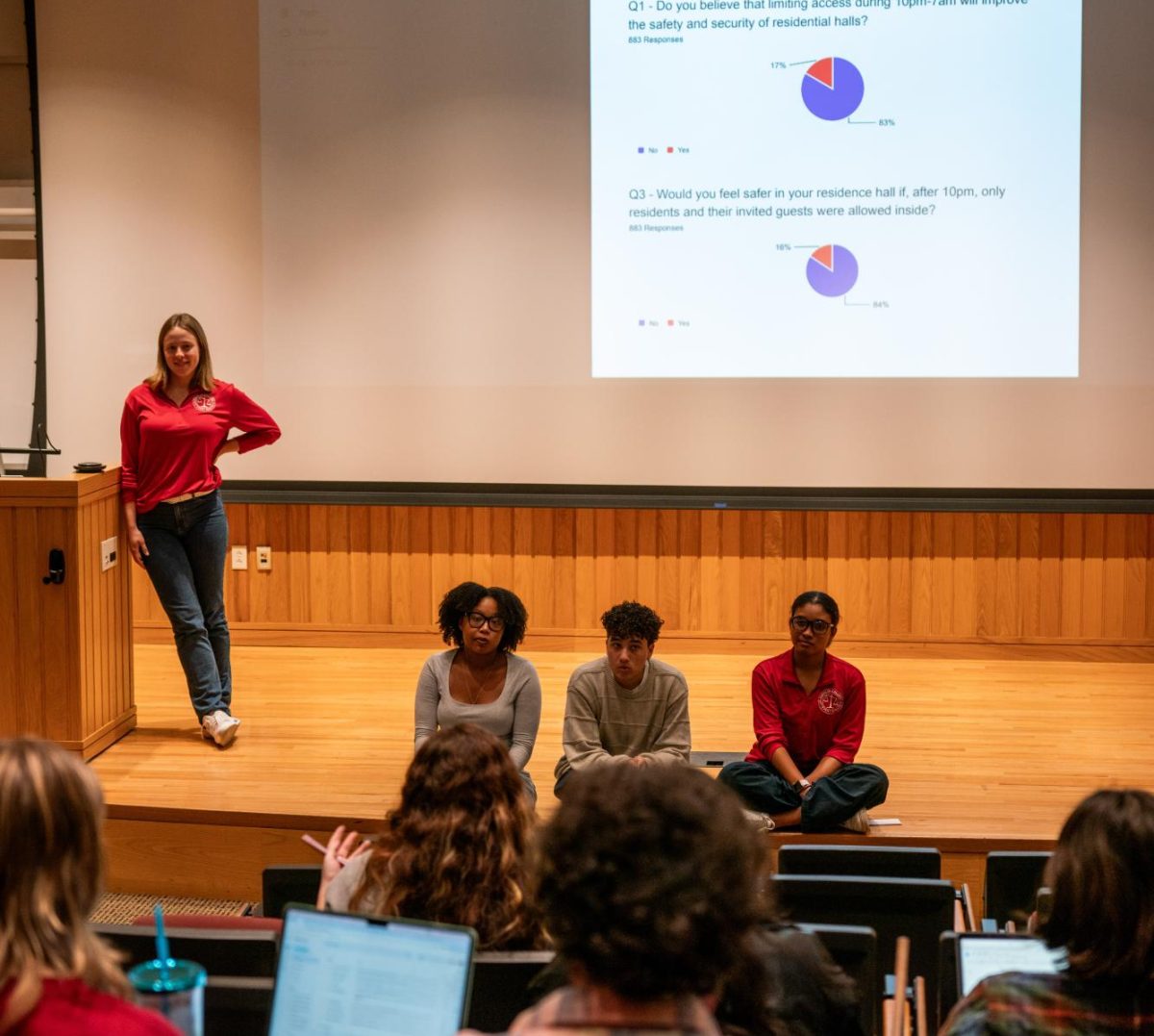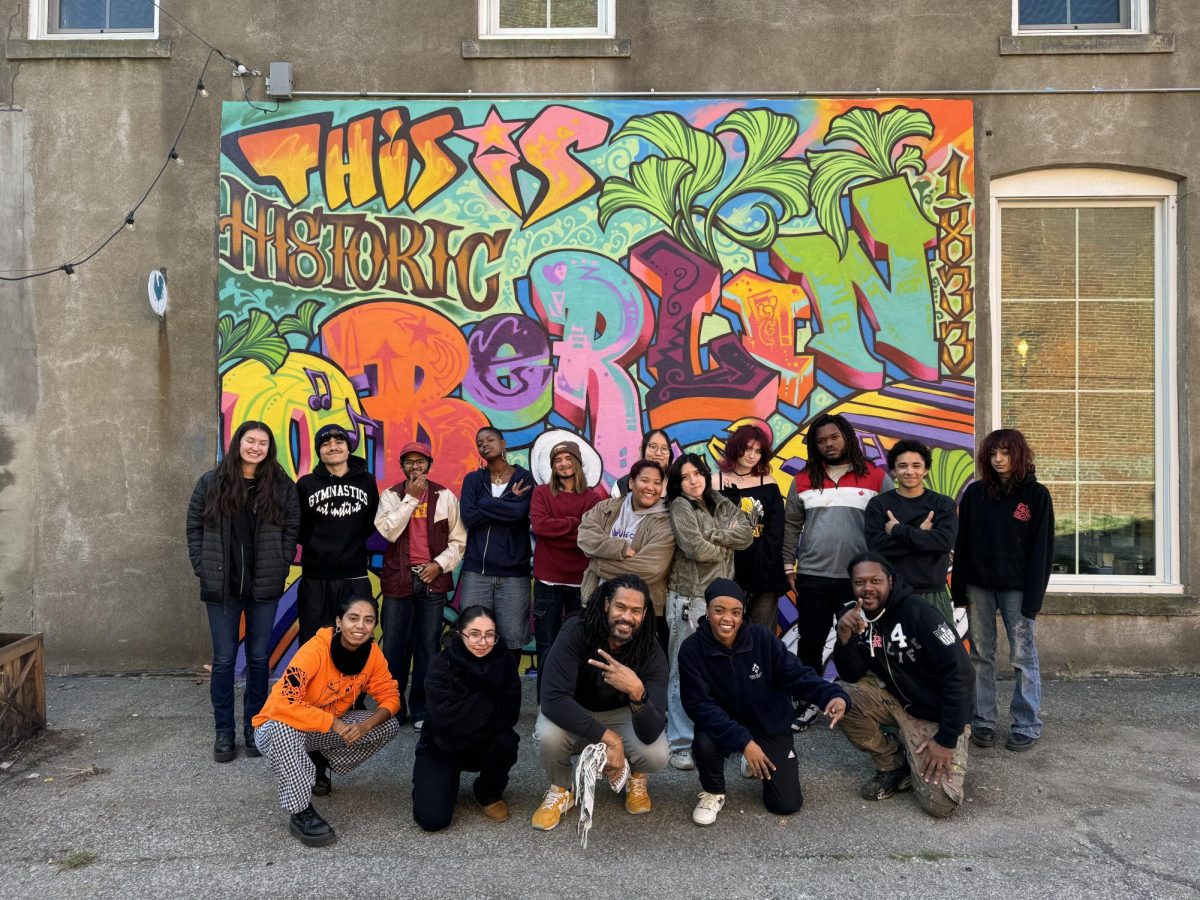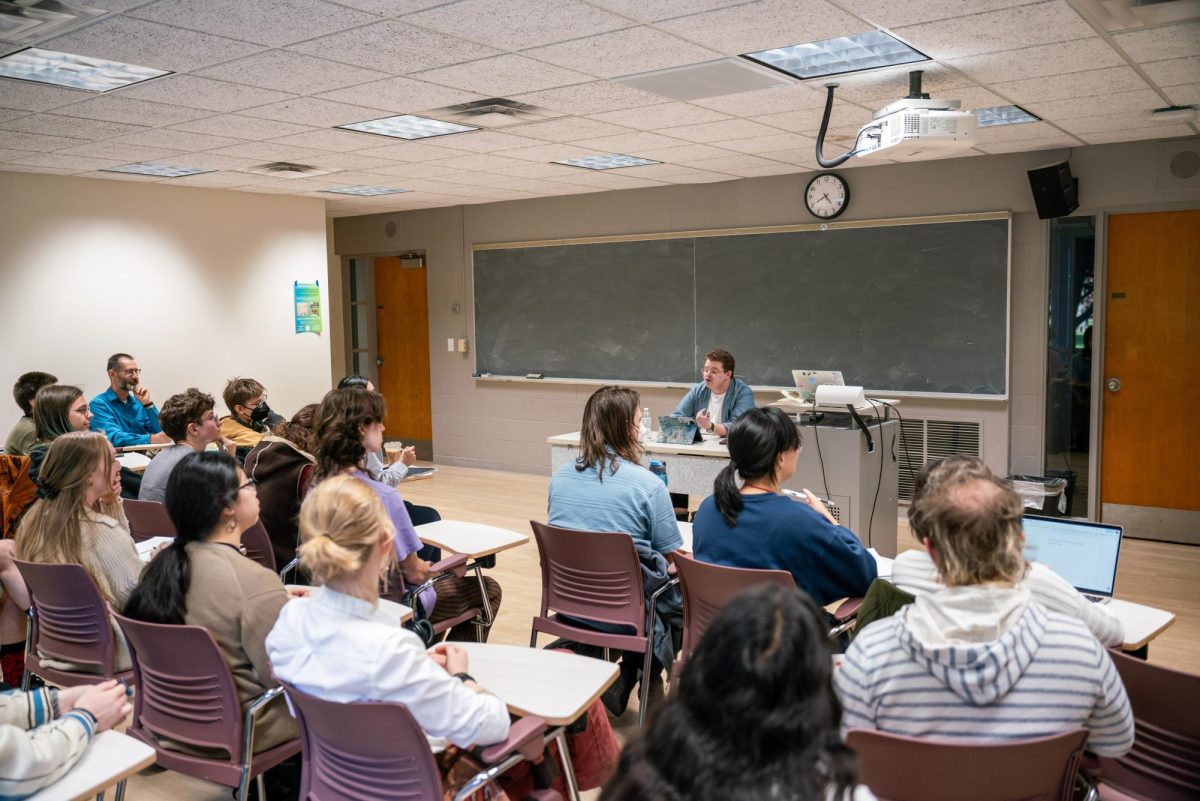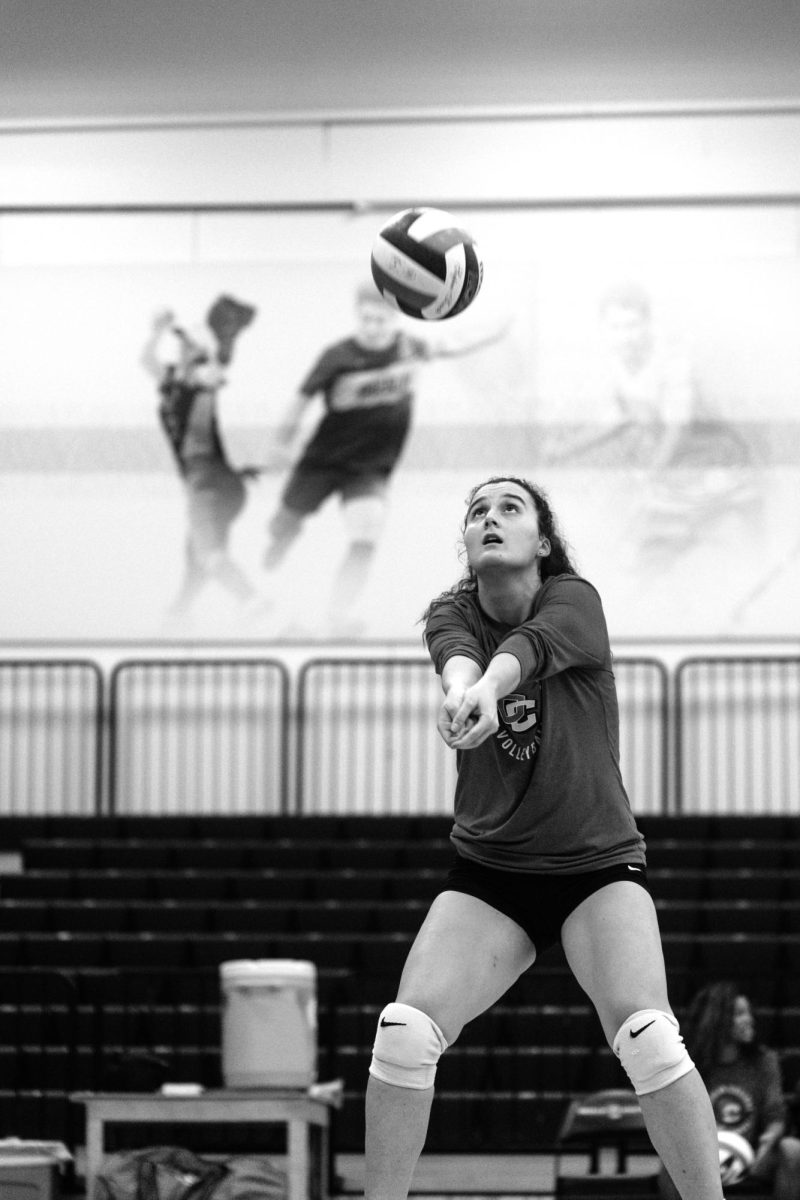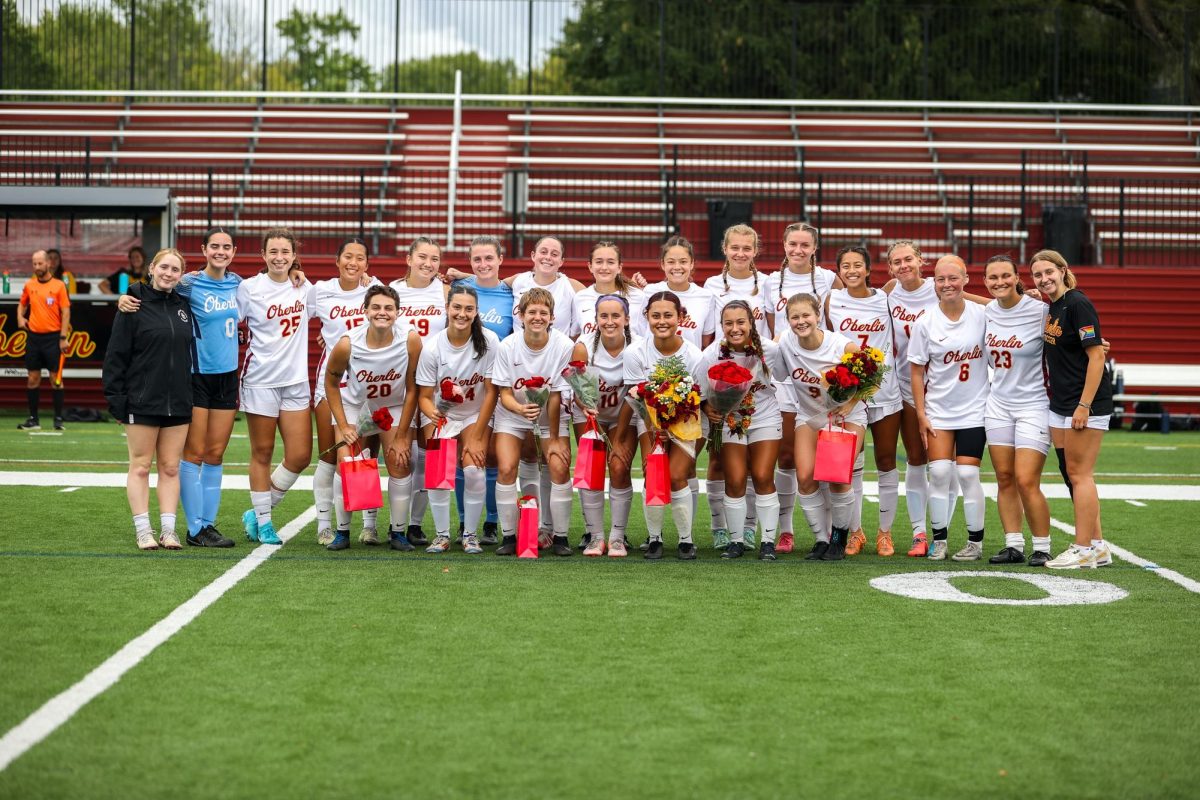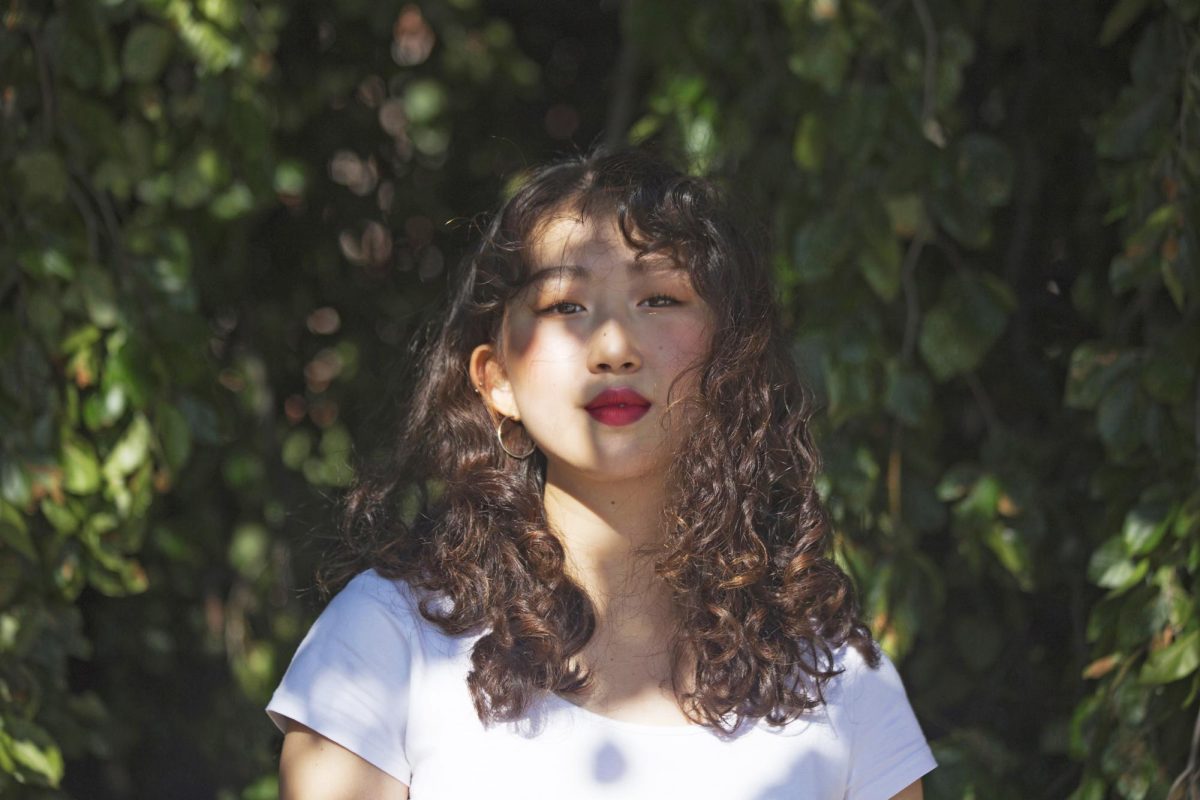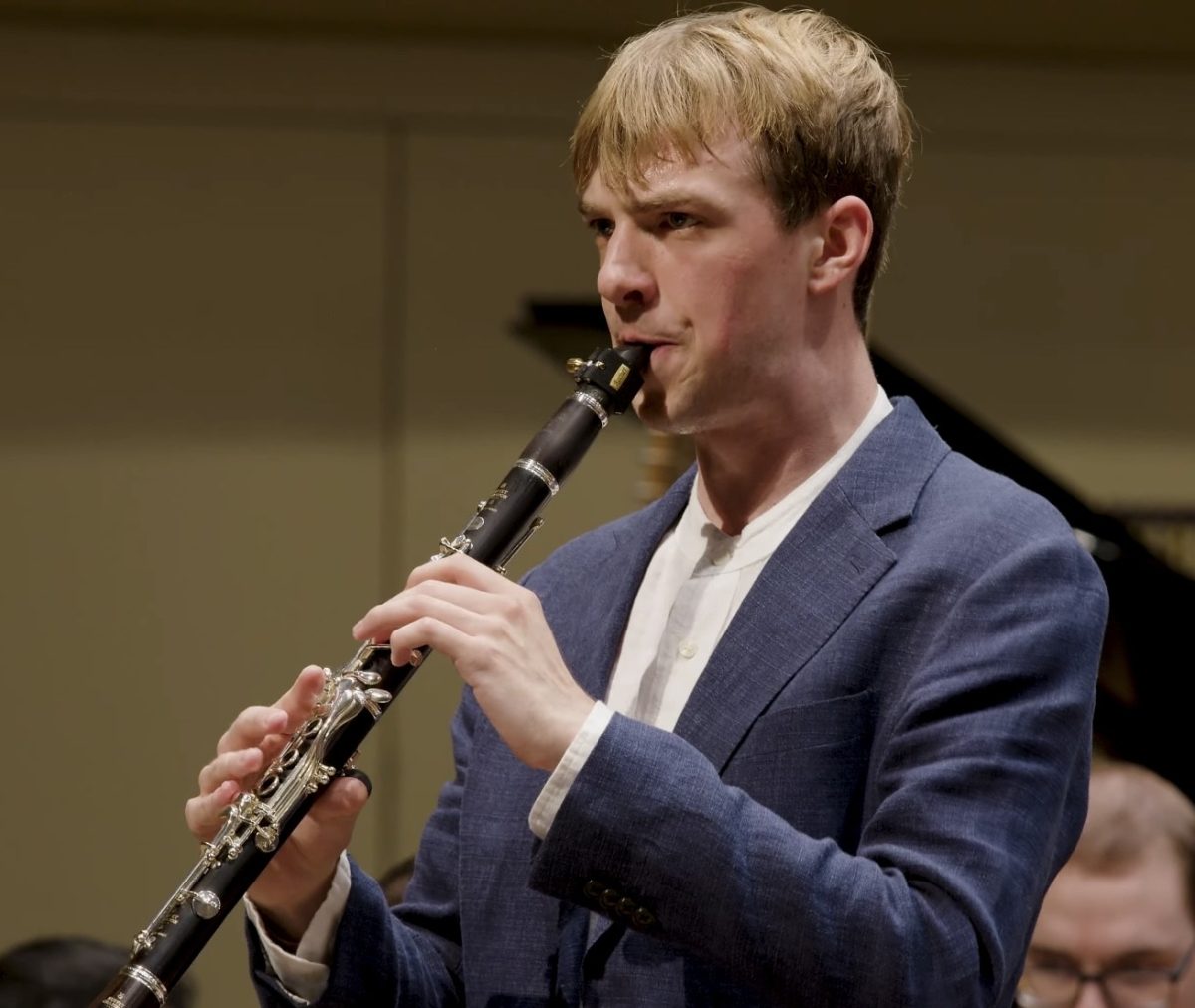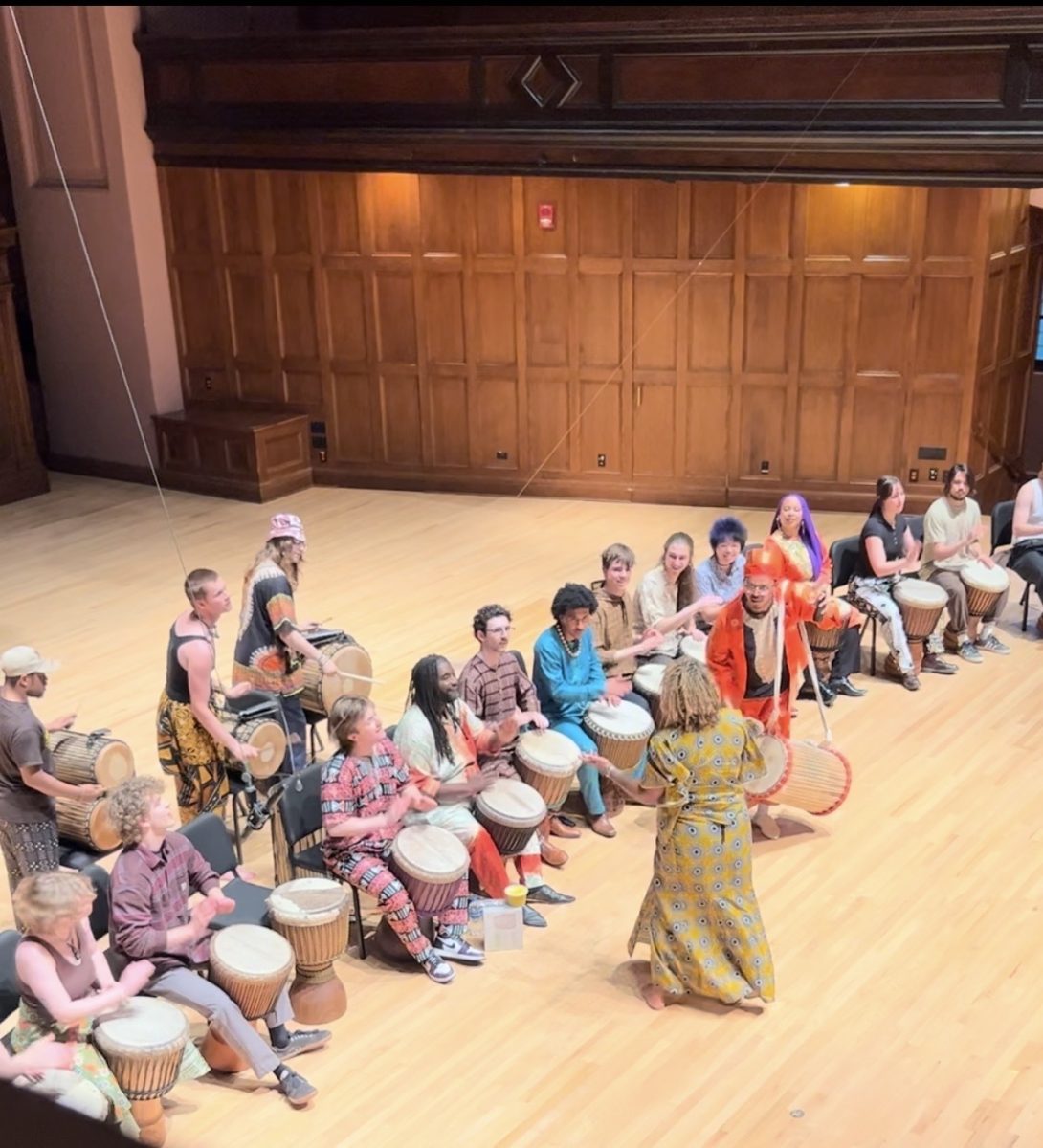Colors of Rhythm Brings Passion, Solidarity to Finney Chapel
April 10, 2015
Yesterday evening, Finney Chapel was filled by Colors of Rhythm, marking the show’s 19th consecutive year. The event, which, according to the its mission statement, began as “constructive protest for the visibility, recognition and celebration of certain cultural dance forms and other art forms that aren’t recognized by the mainstream culture and academics on campus,” continues to be a space to celebrate and honor the multitude of cultures, art forms and performers in the community. “We encourage all those involved to recognize how systems of inequality and oppression work to perpetuate racial and cultural invisibility and appropriation and to acknowledge the agency and power that this event stands for,” the mission statement, which was read aloud at the beginning of the program, goes on to emphasize.
Colors of Rhythm is bigger than ever. This year’s event featured performances from Oberlin College Taiko, Daniella Pruitt with Andre Cardine, the South Asian Students Association, Soulfege,Lion Dance Troupe, Voices for Christ, the Filipinx American Students Association Band, Movimiento, Stories Through Movement, Umoja Steppers and the African Students Association.
The scale and scope of the event reflects its significance on campus. “The fact that [Colors of Rhythm] is on such a large scale is really meaningful for the performers to show the campus what they’re up to, how their identity is important to them and how that shows through their performance groups,” said College senior, OCT member and Colors of Rhythm performer Chris Nguyen. The event’s central location in Finney, the crowd it draws and number of groups performing all combine to make it one of the largest POC performer-celebrating events of the year. Though Colors of Rhythm is an incredibly positive force on campus, there is still more that could be done. “I would love to see more [events centered around students of color]. As a student of color, that’s my experience: definitely not enough,” Nguyen said.Along with visibility, Colors of Rhythm promotes solidarity between both POC groups and the campus community as a whole.
“Colors of Rhythm is important for the campus because it’s a way of showing support, not only between the POC community within itself but also the entire Oberlin student body,” said College sophomore Mina Huerta, who helped organize the event. College sophomore Emily Bang, College first-year Brian Cabral and Latinx Community Coordinator Julio Reyes worked to organize the event with Huerta. “It’s a way of expanding people’s horizons and showing this is what’s on campus. There are different kinds of groups, and here are all of our talents; come support us,” she said.
“Personally I feel that this event is not just exclusive to POC members, but […] [Oberlin] is a predominantly white institution, and there’re not a lot of spaces for POC members, so I feel like we have a time, place and date to just commemorate the different cultures that come together in the performances,” Cabral said, echoing Huerta’s sentiments. He also mentioned that Colors of Rhythm is important in showing prospective students that Oberlin is not completely dominated by white culture.
This year, Huerta, Cabral, Bang and Reyes placed special emphasis on promoting the event and selling tickets to a wider group of students than in previous years. Huerta said, “This year, I think one difference that I’ve been trying to do is to sell tickets to people outside of the POC community to bring them in and expand their knowledge on what Colors of Rhythm is, how students of color on campus are interacting with each other and how they interact with everybody else. [We’re] showing that we’re all people, we all have talents and we all want to have fun.”
That’s not to say that Colors of Rhythm doesn’t have huge significance for students-of-color audience members as well. “I wasn’t really involved in [Asian American Alliance] or a lot of organizations last year. But then I went to Colors of Rhythm, and I was like […]‘Oh,I can be a part of this organization! This is here for me,’” said College junior Dana Fang. “I wasn’t part of the group, and now this year I am, and a lot of it had to do with Colors of Rhythm. […] I think in a lot of ways it reaches a broader audience, but it is also able to reach a very specific audience that may feel too intimidated or shy to pursue these people and pursue these groups.”
Another goal that the event organizers emphasized was raising money for the Undocumented Students’ Scholarship Program and the Yakubu Saaka Scholarship Fund, both of which are in need of financial support. Cabral said that the Colors of Rhythm organizers wanted to show support and solidarity for the scholarships. Huerta added that often, while selling tickets, hearing that the proceeds would go toward these scholarships was a deciding factor in convincing people to purchase them.
“Performing in Colors of Rhythm gives you energy because there are more people that you can identify with it. I’m not saying that it’s not appreciated in other spaces and other events, but I feel like there’s more understanding behind this event,” said Huerta, who performed in and choreographed Movimiento’s dance.
Last night, Finney was certainly charged. Sitting in a hall that was by turns raucous, hushed and joyous, the passion, respect and support that both performers and audience members brought to Colors of Rhythm was palpable and deeply moving.






